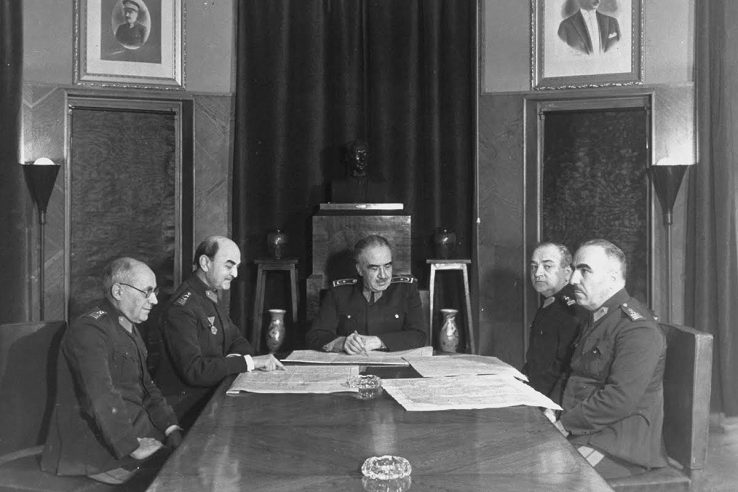
If you look at a map of Europe and the Middle East, you’ll probably notice that two countries could have given Hitler access to North Africa and the Middle East without too much of a water jaunt. At the west end of the Mediterranean, Spain could have given him access to Morocco and then to the rest of North Africa. On the east end, Turkey could have given him easy access to the Middle East, then on to North Africa. German troops in Turkey could have pushed into Iraq, where Iraqi nationalists revolted against the British in 1941, then Jordan, Palestine and Egypt. They could have also pushed north from Turkey into the Soviet Caucasus region, going after Soviet oil that way rather than through the route which led to Stalingrad.
Both Spain and Turkey stayed neutral through most of World War II. I’ve seen several discussions of what might have happened if Spain had come in on the Axis side. I haven’t seen much on the potential roles of Turkey.
What Turkey actually did in World War II
The Turks fought on the German side in World War I and lost a great deal of territory. After World War I, the antiquated Turkish Ottoman Empire collapsed. The core Turkish territories in Asia Minor almost got parceled out as colonies for Italy and Greece. A group of very able Turkish nationalists took over and pulled the country together. They managed to deter the Italians, then defeated the Greeks and pushed them out of Asia Minor entirely.
The Turkish nationalists were determined to make Turkey a modern, secular, Western society. They made a great deal of progress between the wars. When World War II came along, the Turks wisely wanted to stay out of it.
That became difficult in early 1941, when the Germans took Greece and arrived at the Greek-Turkish border. The Germans put a great deal of pressure on the Turks to come into the war on the German side. The Germans wanted to go through Turkish territory to help Iraqi nationalists who were fighting the British. The Turks did a very good job of stalling, getting German aid and even weapons without giving much in return. As the Germans weakened, Turkey swung more and more to the Allied side, finally making a symbolic declaration of war on Germany in the last few months of World War II.
What might have happened: Turkey is partitioned after World War I
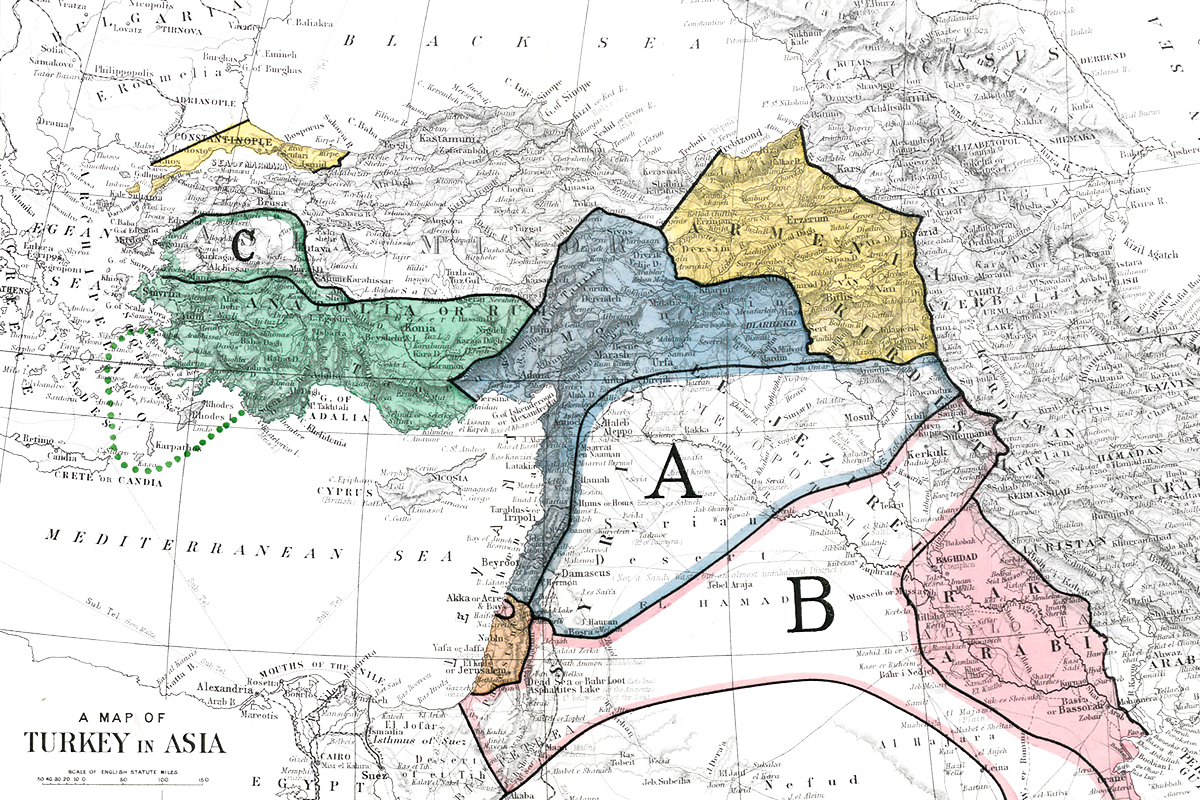
As I mentioned earlier, that was supposed to happen, with Italy getting a major chunk, and Greece getting some areas with large Greek-speaking populations. Armenian and Kurdish speaking areas would have probably become “independent” under the care of one power or another.
This didn’t happen, because the Turks pulled themselves together and proved that they could defend themselves. But what if that didn’t happen? What if a few key people got themselves killed in World War I or in the chaos that followed it? If the Turks had spent a little more time feuding among themselves for power at a crucial time, they would have been snarfed.
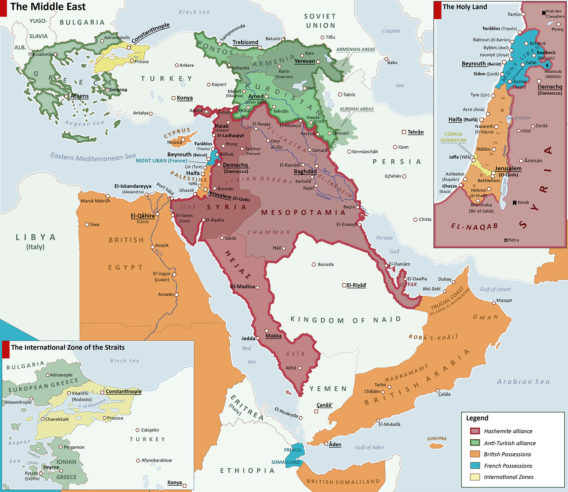
The Turks would undoubtedly have fought back, either with passive resistance or with military revolts. The occupying powers would probably be able to keep a lid on that until the advent of World War II. The Italians might have been preoccupied enough not to try conquering Ethiopia, which would have had major implications for World War II.
Since this is a World War II alternate history, I’m going to assume that in broad outline things go pretty much as in our timeline until 1939. Italy is still strong in numbers of divisions, but still weak in modern equipment, training and finance. The Turkish territory is financially a wash, costing as much to garrison as it contributes to Italy’s coffers. The Greeks are a little stronger than in our timeline, but that strength is tied up in keeping their hold on the Turkish territories.
Italy enters the war on schedule in mid-1940. When France falls, the Italians seem poised to take over the entire British position in the Middle East, with large forces in Libya, Ethiopia and Turkey. Those forces are poorly equipped, poorly trained and poorly led. They make little progress against the British through the next few months.
The Italians demand that the Greeks let them send troops and supplies directly through Greece and Greek-held Turkish territory. The Greeks refuse, and the Italians foolishly attack Greece in late 1940, both from Albania and from Italian-held Turkey. The British take advantage of the situation to attack the Italian possessions in Turkey from Iraq. The Italians suffer defeats in both Albania and Turkey. The Germans bail the Italians out, first sending the force which in our timeline became Africa Korps to Turkey, where it quickly pushes the British back, then routs the Greeks in Greek-held Turkey.
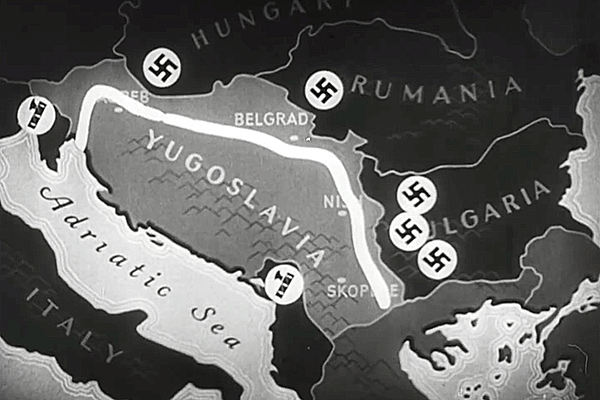
It does all of this in spite of extremely insecure supply lines. The Germans are determined to find a more secure route. They lean on Yugoslavia to give them passage to attack the Greeks in Europe, then invade Yugoslavia, then Greece in the spring of 1941. The British send a force to help the Greeks in their homeland. The British are pushed out with heavy losses of men and equipment.
The Germans invading through the Balkans link up with the Italians and Germans in Turkey. Iraqi nationalists see the British defeated in the Balkans and revolt against them. At the same time, the nominally independent Kurdish State carved out of eastern Turkey after World War I in this timeline decides to throw off British rule. The Germans and Italians quickly grab both Iraq and Kurdistan, giving them access to large amounts of oil. The pro-German shah of Iran takes advantage of British weakness to toss British oil companies out of his oilfields, with German help. With secure supply lines through Greece and Turkey, the Germans quickly field an army capable of taking Jordan, Palestine, then Egypt and the Sudan. The Italians play a minor role in that conquest, but provide occupation forces which allow the Germans to focus on their next conquest.
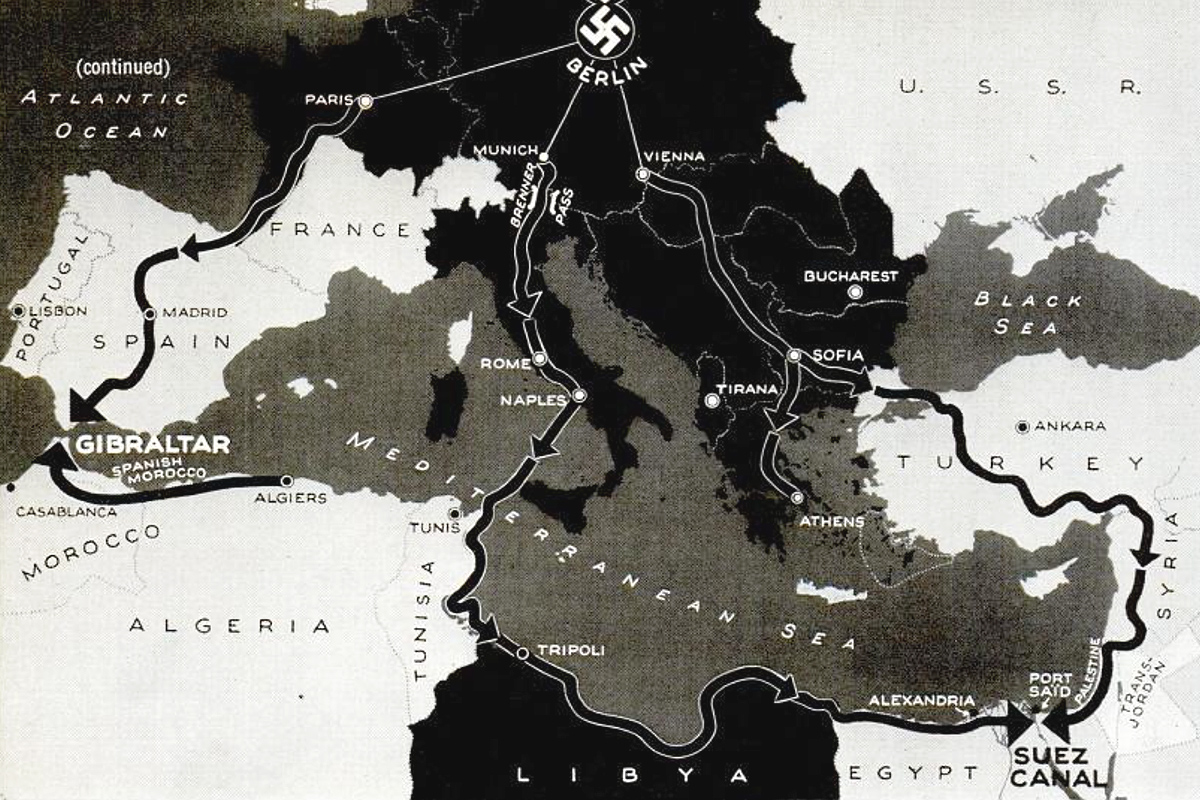
The German invasion of the Soviet Union starts a couple of weeks behind schedule, but the Germans supplement their main invasion with an attack through Turkey and Iran into the Soviet oilfields and refineries of the Caucasus. The Germans are frantically trying to put together the logistics to handle their attacks. They have plenty of oil now, but they are short of trucks to resupply their divisions. They can deal with that to a certain extent by laying tracks and using railroads once areas are secured.
Meanwhile, with the Italians in control of Ethiopia, and the Germans in Iraq, the Saudis find it prudent to cooperate with the Axis. The British are struggling to survive as an empire. With the Middle East in German hands, and with Ethiopia in Italian hands, the British empire is almost cut in two, with forces in the Far East and the home island finding it very difficult to supply one another. Italian ships and submarines have gone through the Suez Canal and are attacking British shipping in the Indian Ocean, as are German U-boats. The loss of the Middle East also means the fall of the Churchill government. It doesn’t mean British peace overtures to the Germans. The British are too stubborn for that.
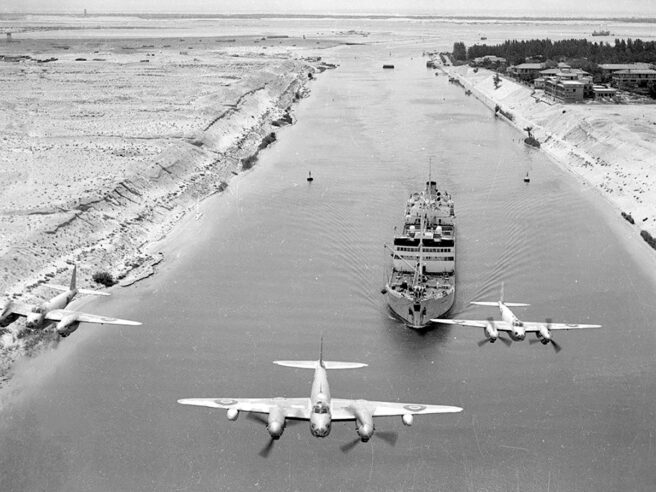
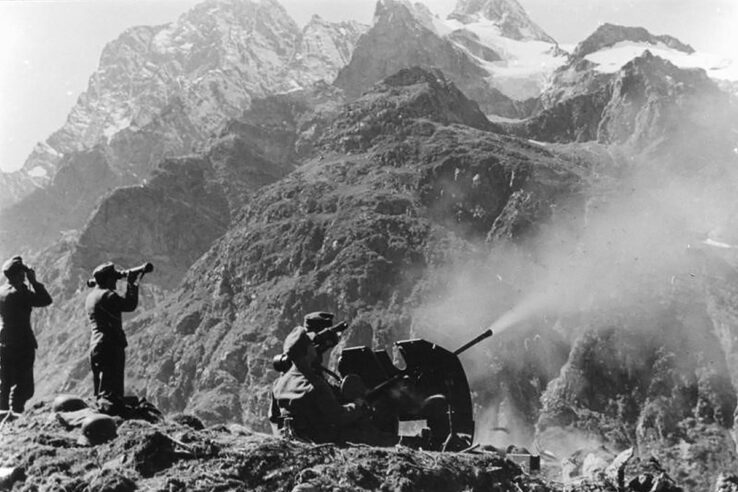
The British Empire is very short on oil. That really pinches the Royal Navy. The United States makes up some of the shortfall, but there are bottlenecks throughout the distribution system. The British are too busy fighting to survive to help the Soviets much in their battle with the Germans.
The German invasion of the Soviet Union takes a somewhat parallel course to the one in our timeline at first. It starts later, with fewer divisions, but the Caucasus front ties up Soviet divisions, which were available on other fronts in our timeline. German success on the Caucasus front quickly translates into problems for the Soviet economy. As the Germans chew up Soviet armies, the Soviets desperately need production to keep them in the war. The cutoff of a significant part of their oil supply further disrupts production, which has already been cut by loss of resources in the western Soviet Union and by the process of moving factories and skilled workers out of the path of German forces.
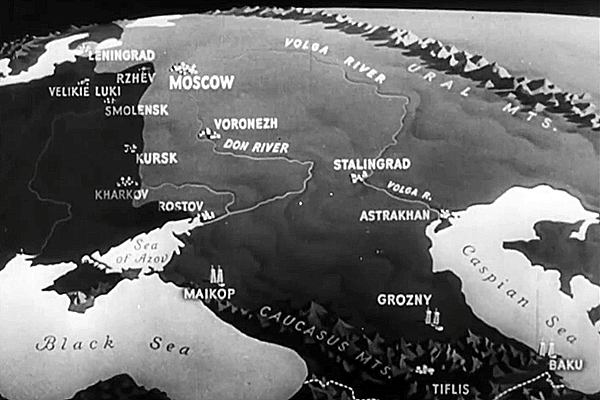
The British losses in the Middle East translate into less Western aid to the Soviet Union. Loss of the oil pinches British shipping. That in turn makes it hard to keep sea lanes open to Britain, much less send major convoys to the Soviets.
In our timeline, Western aid was relatively small compared to Soviet production, but it filled in crucial gaps: trucks, radios, food, railroad cars and locomotives. It also helped the Soviets keep armies in the field during the crucial period while they were relocating their factories. Without that aid, and with the Caucasus oil in German hands, the Germans in this timeline might take Moscow in late 1941. General Mud and General Winter played a crucial role in preventing that in our timeline, but so did the Soviet ability to continue throwing armies at the Germans. I’m going to say the Germans take what’s left of Moscow December 1941.
Meanwhile, the US is getting more and more worried by Axis victories, and is building up forces, probably a little faster than in our timeline. The Germans are getting more and more annoyed by US interference. The Japanese are getting more and more tempted by British weakness in the east. On the other hand, the British have been building up there. With the loss of the Middle East, Indonesian oil has become more important to the empire. Combat power that would have gone to the Middle East goes to Malaysia and Singapore.
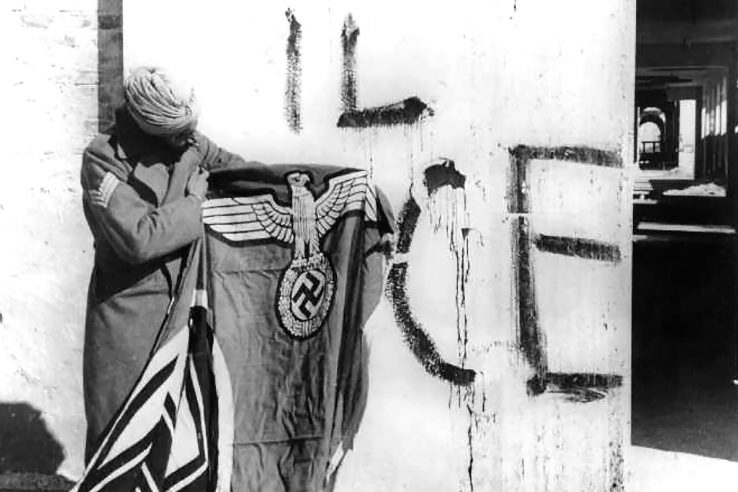
Some of those forces also go to India. German forces in Iran are entirely too close to India for British comfort. Afghanistan has become a crucial element in the war, with the Germans and British backing rival factions inside the country. The Germans have a rather ineffective “Indian Liberation Army”, made up of former Indian prisoners of war from the British Army defeats in the Middle East. The Germans and British duel along the Iranian border, but the British are too weak to take the offensive and the Germans are too busy elsewhere.
Hitler now holds Palestine. He delegates solution of the “Jewish problem” to radical Arab factions in Palestine.
With the Middle East in German hands, the British face a dilemma. On the one hand they want the US in the war, and provoking Japan is the easiest way to make that happen. On the other hand, the remainder of the British Empire is dependent on Dutch East Indies oil, and that oil would be a Japanese target if Japan entered the war. In this timeline, the British work hard to avoid provoking Japan, successfully pushing the US not to impose an oil embargo on the Japanese in mid-1941.
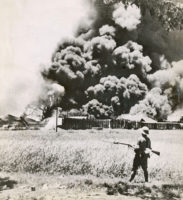
In Japan, the debate in mid-1941 is not about whether or not to attack the West. It’s about the timing. The Japanese would rather not tie up their forces against the West at a time when there might be easy pickings in the Soviet Union if German victories there lead to a Soviet collapse.
In our timeline, the US oil embargo made an early Japanese attack on the West inevitable. In this timeline, oil is still available, though the shortage due to loss of Middle East fields has allowed prices to skyrocket. In both timelines, the Japanese build up their forces in Manchuria and watch for signs of a Soviet collapse. In this timeline, the signs come, as the Soviets pull forces out of the Far East earlier than they did in our timeline. They do that because they have simply run out of armies to keep the Germans out of Moscow. When Moscow falls anyway, the Japanese army in Manchuria takes that as a signal to attack, which they do in late 1941.
A rump Soviet state keeps fighting at the beginning of 1942, but the fall of Moscow is crucial. It is a transportation hub as well as a symbol for the country. The fall of Moscow also makes the eventual fall of Leningrad inevitable. The German army suffers a great deal in the winter of 1941, but the Soviets have no reserves to take advantage of their weakness.
The Japanese find that even a weakened Soviet Union is a formidable adversary in the east. The Soviets have most of their remaining strength in the west, but even poorly trained Soviet forces with tanks like BT-7s and T26s, which would be nearly useless in the west, are tough opponents for the Japanese, with their undergunned tanks spread out among infantry divisions. A handful of Soviet KV1s and T34s are devastating. The Japanese make some progress, but at a heavy cost. They do learn some valuable lessons, hastily up-gunning their medium tanks so that they can handle KV-1s and working on a Japanese T34-equivalent. They also learn some hard lessons on why it is important to concentrate their armor.
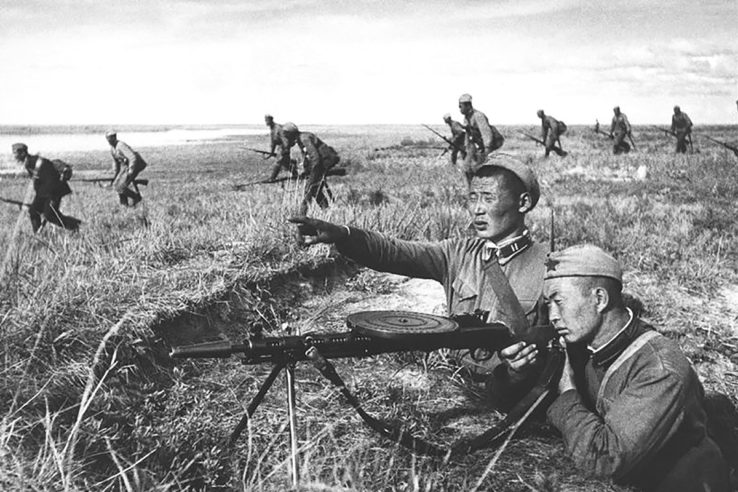
In 1942, the Germans go for a knockout against the Soviet Union. They take the rest of the heavily populated area around Moscow, destroying a major hunk of the remaining Soviet army, finish cutting off Leningrad by taking the rest of the Lake Ladoga shoreline, and cut the Soviet northern ports off from the rest of the USSR. The Soviets are now showing signs of disintegration. Most of the Central Asian republics are in revolt. Food is in very short supply throughout Soviet-held territory. Millions of Russians have been moved to the Urals, where there is not enough housing or food for them.
In the confusion of the withdrawal from Moscow, Stalin’s security slips and he is badly wounded in an assassination attempt. Rumors fly that he is dead. That triggers further disintegration. The purges have left plenty of anti-Stalin sentiment in the Soviet Union. As rumors of Stalin’s death spread, some army units revolt, while others break up and head for home, just as they did at the end of World War I. Hitler shifts his emphasis to dealing with the rest of the British Empire. Leningrad falls in mid-1942.
The Germans now emphasize building ships and aircraft. They want to finish off the British presence in the Mediterranean, taking British-held Crete, Malta, Cyprus, and eventually Gibraltar. In the long run, the British position in the Mediterranean is untenable. British convoys to all of those areas except Gibraltar have to go through areas that can be dominated by German and Italian shore-based planes. They also have to contend with the Italian navy.
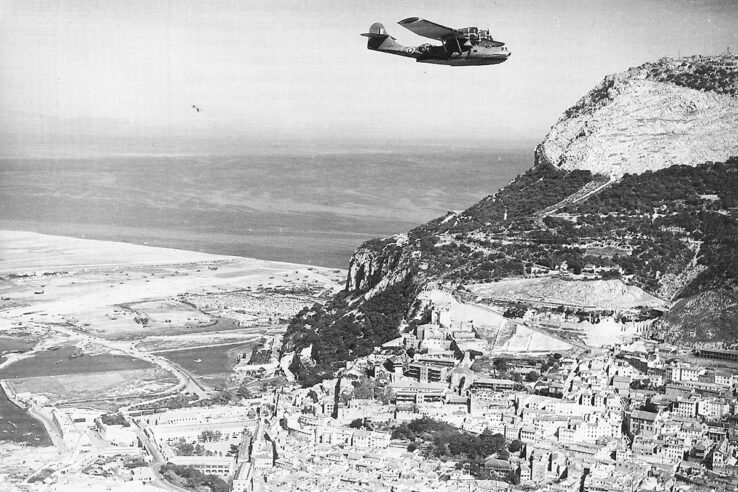
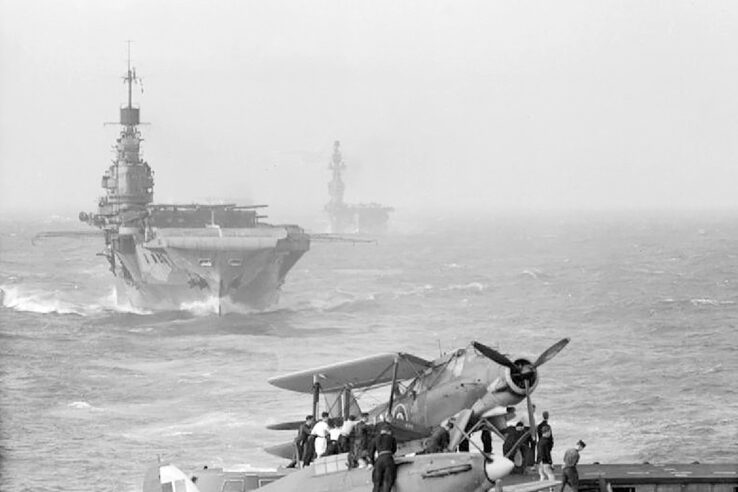
In our timeline, the Italian navy spent a lot of time sitting in port. In our timeline, it had to because there wasn’t enough oil to go out and fight. Would it go out and contest control of the sea lanes against the British given enough oil to do so? I don’t know. Would it survive if it did? I don’t know. Would the British maintain a large surface fleet in the region without the Suez Canal and without oil? Would they make the effort to resupply bases like Crete, Cyprus and Malta when the home island is suffering severe shortages? Again, I don’t know. For the purposes of this alternate history, I’ll assume that the British position in the eastern Mediterranean gradually withers on the vine.
Meanwhile, the Italians have been pushing down the East Coast of Africa, with small scale German help. The Vichy French-held island of Madagascar becomes a battleground, with small numbers of German and Italian troops fighting a scratch group of Commonwealth troops for control of the island. The Germans and Italians have gotten involved in the Belgian-held areas of Africa. British defeats have unleashed a bewildering array of anti-colonial forces, as well as dozens of conflicts between African ethnic groups.
The remaining neutrals in Europe find themselves with less and less maneuvering room. Franco’s Spain finds itself with major problems opportunities. With British oil and shipping in short supply, Franco finds himself dependent on Hitler for oil, and many other imports. Hitler’s price for those goods is steep. He wants passage through Spain to attack Gibraltar and bases in the Canary Islands and Spanish Morocco. The Spanish don’t have a lot of choice in the matter, though Hitler finds that going through Spain to Gibraltar takes a lot of logistical preparation. Spanish roads and railways are in bad shape after the Spanish Civil War.
The Germans have also been working on the logistics for a major push into India. That starts in mid-1942. It is helped by anti-British sentiment in some Indian circles. The Germans don’t take much advantage of that sentiment. They rarely bother to hide their contempt for the Indians. The Japanese note the direction of the German advance and gear up for their own offensive to the south. German victories against the Soviets have made the Japanese attacks on the Soviets somewhat more viable, but a large number of their best divisions are still tied up in those attacks.
The Japanese have a dilemma. They can fight the Soviets and still win against the British and the Dutch. They can’t fight the Soviets and win against the British, Dutch and the United States. At the same time, the US is their most powerful potential adversary, and a move against the British may trigger US entry into the war. Also, the US is embarking on a naval buildup that the Japanese simply can’t match.
War now against the US soon seems necessary to the Japanese, but how can they win it? The US is actually stronger in the Far East in this timeline than in ours. We have had an extra six months to build up. During those six months, we haven’t been sending arms to the Soviets because we can’t get them to them. As a result, the US army in the Philippines is much stronger. The British are also much stronger in the Far East because the troops and weapons that would have been in the Middle East are now mainly in the Far East.
Where does it go from here?
There is a major fork in the road here. The Japanese might go ahead and attack the US in early 1942. They might decide that they can get what they want from the British and Dutch without war. As the Germans advance against India, the British would probably do a lot to keep Japan out of the war. Gaining ground by military intimidation might be more rational than getting in a war which might bring the US in. If the Japanese attack in the Far East, we probably end up with the important parts of the British Empire being mopped up except for Canada, Australia and possibly the home islands. The remnants become a junior partner of the US. I’m going to explore what happens if the Japanese decide to wait until the Soviets become less of a threat.
If the Japanese don’t attack, the Germans would probably still chew up India, leaving only Burma, Malaysia and Hong Kong in British hands. Those little pieces would be dependent on the Japanese for their continued existence in 1942. The Japanese would gradually turn the screws to the point where those remaining colonies are Japanese controlled in everything but name. The British would have no choice but to stop supplying the Nationalist Chinese with weapons through Burma, which would rapidly reduce Chinese fighting power. The Dutch would also be reduced to dependence on the Japanese as British power declines.
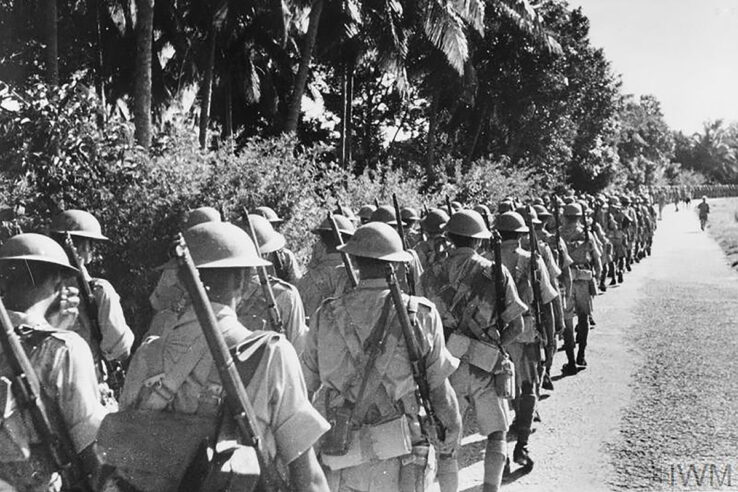
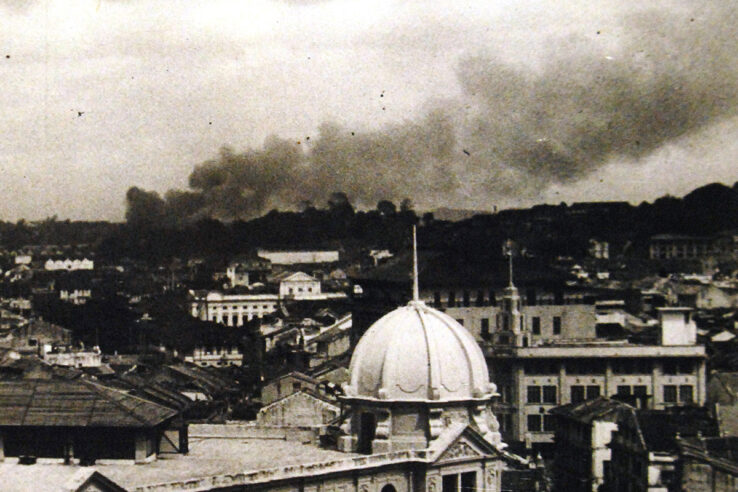
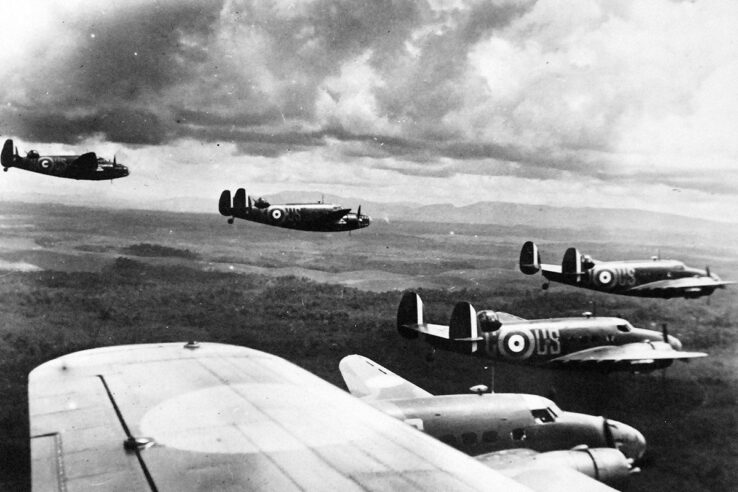
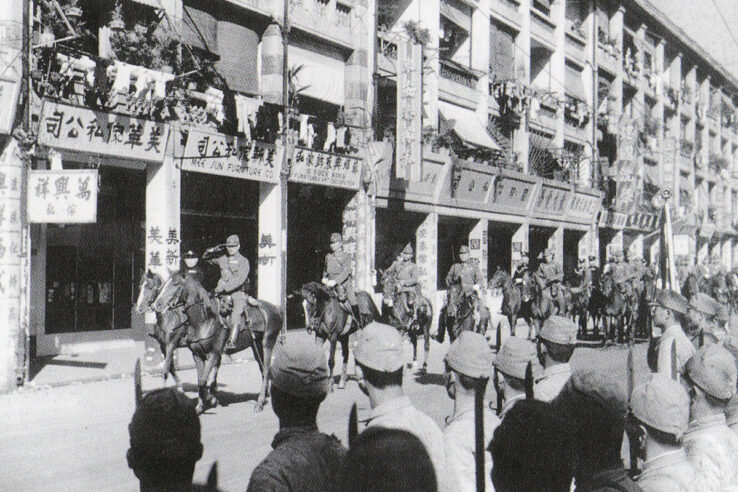
With the bulk of their population and industry in German hands, the Soviets become a slightly more formidable version of Nationalist China. The Germans and Japanese can’t occupy every square mile of the Soviet Union, but the Soviets can no longer generate great military power. Their authority over unoccupied areas of the Soviet Union is weakened by loss of the population centers. Within occupied territory, groups spring up to resist the Germans, usually without much direction or control from the Soviet remnants. The Soviets try very hard to bring those groups under their control. They had trouble doing that in our timeline. In this timeline, they would be less successful.
The Germans have no major enemies on the mainland of Eurasia. They are very overextended, though. They make enemies throughout the Middle East, the former Soviet Union and India, as Arabs and Russians and Indians all quickly find that they have traded one master for a much worse one. In most areas, the Germans are able to maintain control through ruthless tactics, but at a cost of increasing hatred throughout their area of control.
The Germans have now turned their attentions westward. U-boat production skyrockets. The Luftwaffe tries to regain control of the air over the English Channel and the coast of England. The Germans resume large-scale building of surface ships.
In the US, isolationism is still a force, but the military danger from Germany and Japan is obvious enough that the US is still doing a military buildup. It isn’t as big as the one in our timeline, but it is big enough to make the US the single strongest military power in the world if it continues.
And that’s where the stories would go
There is lots of room for intrigue in this timeline. I could have American agents working in Spain to try to keep Franco from giving the Germans bases. I could have them trying to contact non-Soviet anti-German forces. I could get into Italian-British colonial wars in Africa. I could get into the main conflict between Britain and Germany for control over the waters around the British home islands. I could get into intrigues between Germans, Americans and British to gain control of nationalist Arab factions in the Middle East.
Where do you think it would go from here? Let me know in the comments!
This story was originally published on Dale’s website in July 1998.


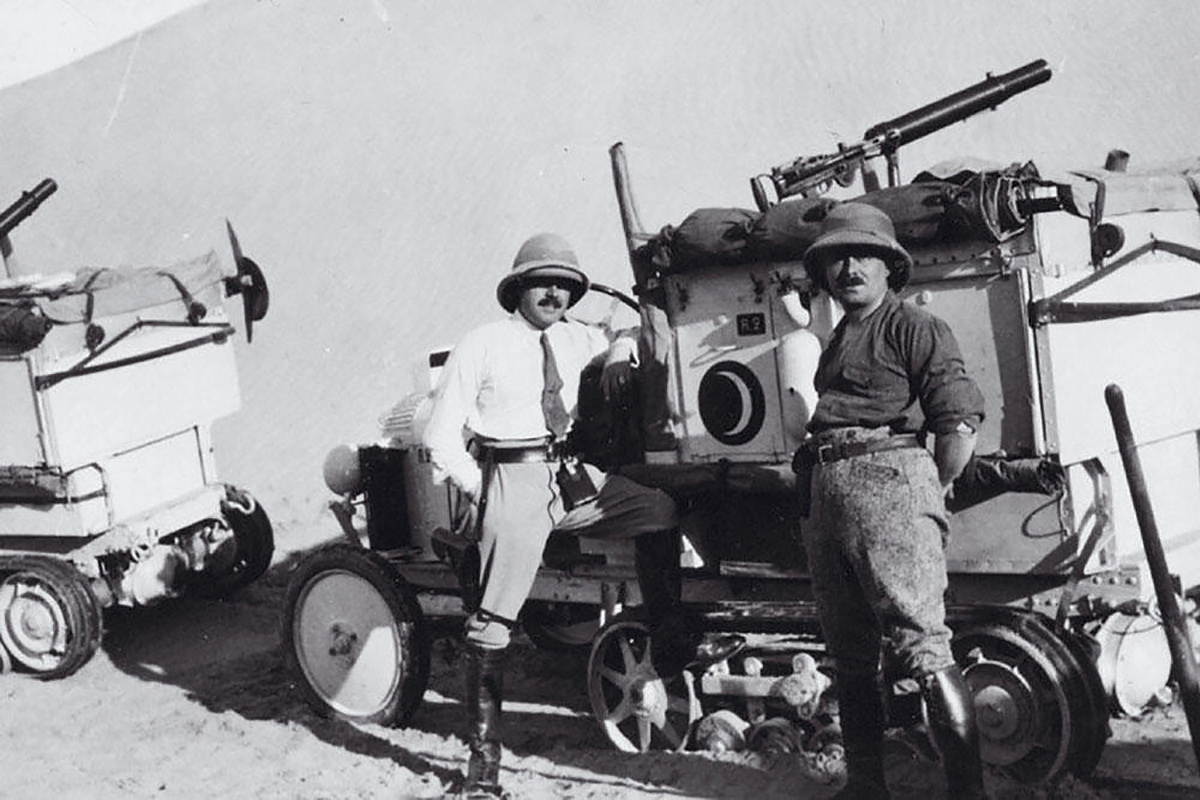


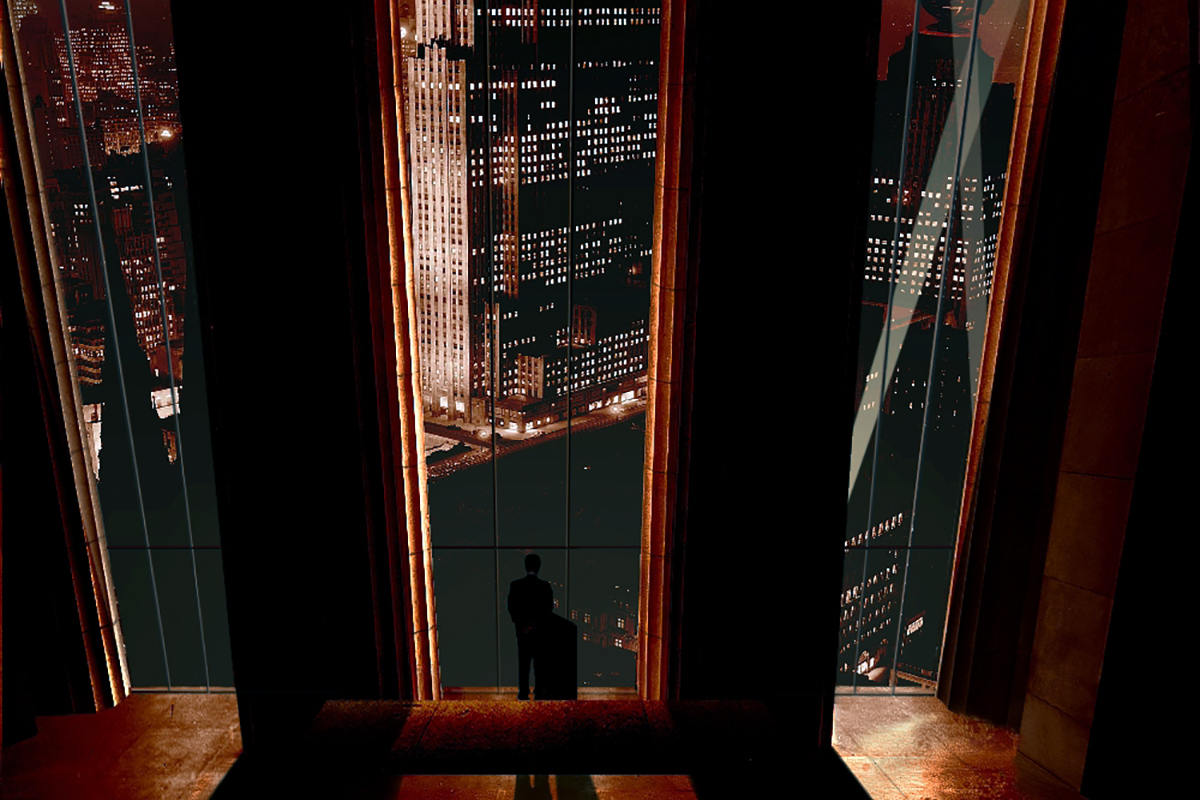
1 Comment
Add YoursWhat I’d find fascinating is how this timeline’s pre-eminent US would relate to Mexico and Latin America as a whole. Would Brazil and Argentina remain sympathetic to Germany? Would the US be forced to formalize Mexican braceros’ positions as agribusiness slaves somehow, as manpower shortages bit harder for longer? What about Pemex…model for Roosevelt, in a two-front permawar without strong allies, or casus belli contra Mexico to repatriate Gulf & Texaco’s losses? Many good stories and possibilities.